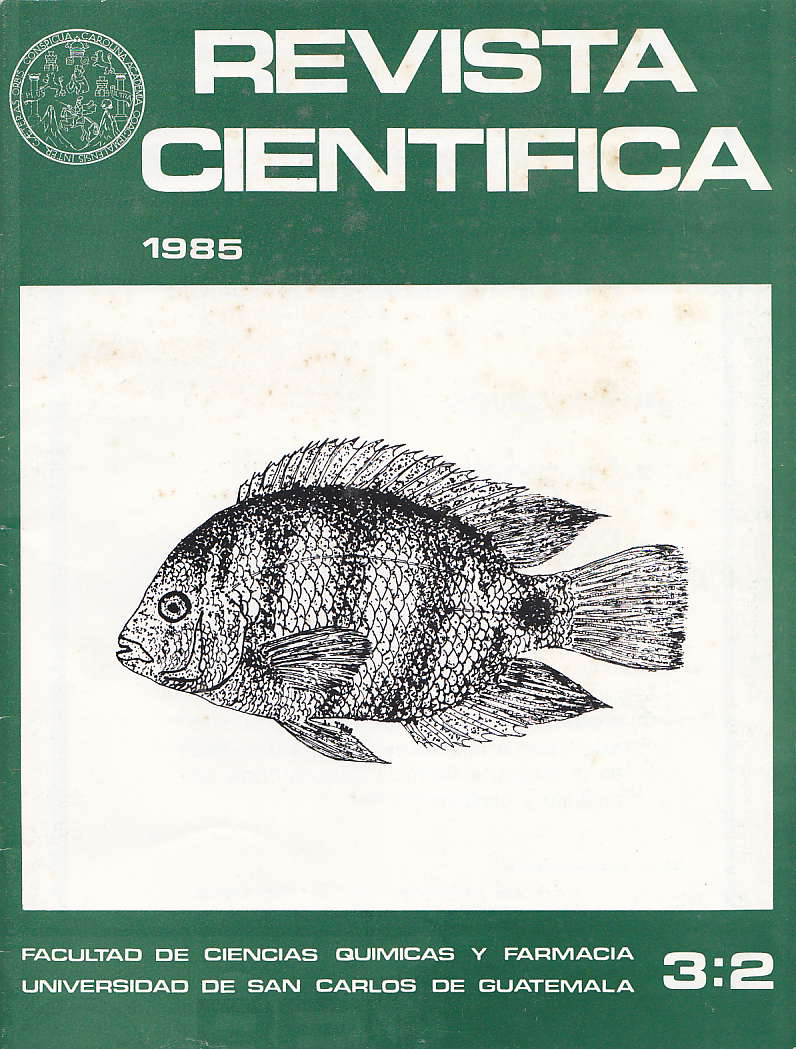Considerations on the use of sulfisoxazole in ophthalmic prophylaxis of newborns in Guatemala
DOI:
https://doi.org/10.54495/Rev.Cientifica.v3i2.457Keywords:
considerations, sulfisoxazole, ophthalmic prophylaxis, newborns, GuatemalaAbstract
Due to the problems and inconveniences created by the inappropriate use of traditional drugs used for ophthalmic prophylaxis in newborns in Guatemala, it is necessary and important to conduct a study in Guatemalan children to identify alternatives that can effectively replace these drugs. Sulfisoxazole is one such alternative, and it is currently in use without prior clinical study or scientific analysis. This study was conducted to establish the efficacy of sulfisoxazole in ophthalmic prophylaxis in newborns in Guatemala, compared to the traditional use of 1% silver nitrate. The practical study was conducted at the Monte María Sanatorium in Guatemala City with a sample of 100 newborns divided into two groups of 50 each. The first group received 4% sulfisoxazole ophthalmic solution and the second group received 1% silver nitrate ophthalmic solution. In children receiving 4% sulfisoxazole ophthalmic solution, no side effects or adverse reactions occurred. However, in the group of children receiving 1% silver nitrate ophthalmic solution, 10 children were affected, presenting irritation, and 8 of these 10 children had persistent purulent discharge. It was observed that 4% sulfisoxazole can satisfactorily replace 1% silver nitrate in ophthalmic prophylaxis of newborns in Guatemala.
Downloads
References
Holt E, Howland J. Oftalmología. Uthea. 1980; Volumen I: (p. 1).
Downloads
Published
How to Cite
Issue
Section
License
Copyright (c) 1985 Gilda Nohemí Díaz Díaz, Nora Cortés de Méndez

This work is licensed under a Creative Commons Attribution 4.0 International License.
Authors who publish with this journal agree to the following terms:
- Authors retain copyright and grant the journal right of first publication with the work simultaneously licensed under a Creative Commons Attribution License 4.0 that allows others to share the work with an acknowledgement of the work's authorship and initial publication in this journal.
- Authors are able to enter into separate, additional contractual arrangements for the non-exclusive distribution of the journal's published version of the work (e.g., post it to an institutional repository or publish it in a book), with an acknowledgement of its initial publication in this journal.
- Authors are permitted and encouraged to post their work online (e.g., in institutional repositories or on their website) prior to and during the submission process, as it can lead to productive exchanges, as well as earlier and greater citation of published work.









